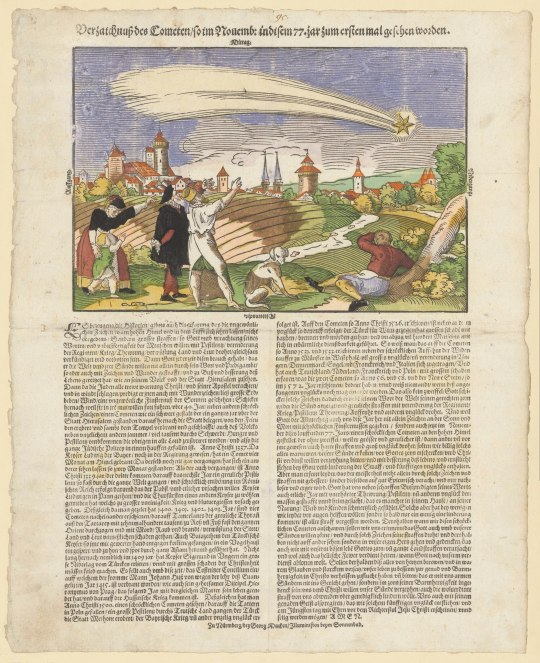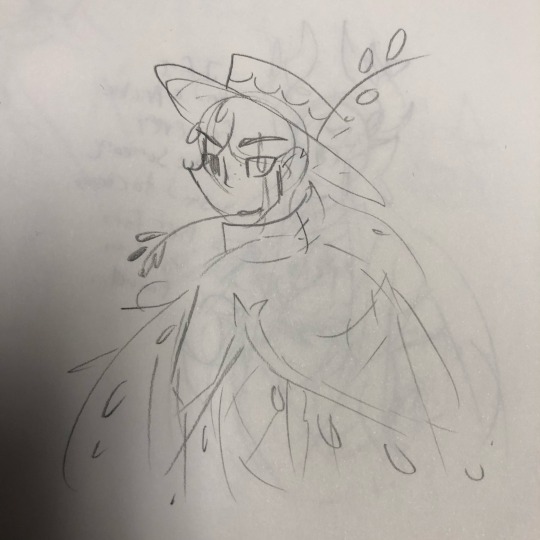#ergotism
Text
The Unfair Folk and Twisted History
---
Why Fairy Ring mushrooms used to suck
Fairy ring mushrooms were considered really bad luck in Medieval Europe because it was believed that if you stepped into the circle the fairies would scoop your soul out and make off with it. Nobody would know it had happened. Not even you. You wouldn't have a clue you were essentially operating on battery power until you just keeled over for some reason.
How the stroke got its name
The word 'stroke' doesn't just cover the medical affliction. It's an archaic term for a blow, or a hit. What we now know as having a stroke was once believed to be an attack from the Fair Folk, as the term elf-stroke was used for a while. It eventually got shortened to just 'stroke'.
Changeling children
You remember the myths of the fairies stealing human children and leaving one of their own in the stolen child's place? That led to a lot of infanticide, but where it gets REALLY creepy is when one realizes that some of the indicators of a child being a changeling match up with autism symptoms...
How paranoia killed a third of Europe's population
Remember the witch craze in the Dark Ages? How everybody's grandmother got accused of witchcraft and so many people died? What you probably don't realize is that it extended to cats. All cats. ALL cats. Not just black cats, but cats in general were believed evil and killed off. This led to a nuclear explosion in the rat population, because you know what happens when you remove any prey species' main predator... And the rats coming off of trader ships were like "Holy shit, they're doing WHAT to your cats?! Grab our luggage, honey! We're moving in!" And what comes with rats? Fleas! Lots of fleas! And the rats coming off the trader ships had real nasty fleas, and THOSE fleas bore the Black Plague. See where I'm going? More rats, more fleas...
Bad bread, ball-tripping and Salem rye
There's a not-crazy hypothesis that the Salem Witch Trials took place because of bad bread. See, in Salem they ate mostly (if not all) rye bread, and rye is prone to a fungus called ergot. Ergot contains a diluted form of the active ingredient in LSD, and it builds up in the system of whoever eats it. Throw in some ignorance and a lot of paranoia, and...
---
Or am I wrong? They certainly don't cover this stuff in History class...
#history#the fair folk#changelings#Dark Ages#salem witch trials#fairy ring mushroom#changeling#fairy ring mushrooms#faeries#the fae#Salem Massachusetts#witches#witchcraft#ergot#ergotism
14 notes
·
View notes
Text

10 notes
·
View notes
Text

Ripper Street (2012–2017) The King Came Calling
S1E3
People are dying in the streets of Whitechapel and it seems that cholera has returned caused by a contaminated water pump. Jackson,however,examining the first victim,a man who has come from the city of London,detects the cause of death as ergotism,which sends its victims mad before they perish,and which has been deliberately added to the flour at Flora Gable's mill by a self-imposed judge of morals,who is also seeking notoriety in excess of the Ripper. With Reid's wife among the stricken the Whitechapel force must combine with Inspector Ressler from the city to catch the killer.
#ripper street#tv series#the king came calling#S1E3#period drama#crime#mystery#whitechapel#matthew mcfayden#London#Victorian era#Ripper#ergotism#poison#flour#mass killer#year 1889#just watched#BBC series
8 notes
·
View notes
Text
instagram
Episode 70: The Dancing Plague of 1518 Photodump
Image 01: Strasbourg , France. 1572.
Image 02: In July of 1518 a haunted woman begins to dance in the street. She dances for days days on end with no food or water until she collapses. Anyone who tries to help the woman becomes inflicted with the same uncontrollable urge to dance. A crowd of dancers forms in the street, unable to stop dancing.
Image 03: The religious leaders of Strasbourg decide to enlist musicians to play music and aid the people suffering from this “Dancing Plague.” The hope is that the dancers will get it out of their system by dancing the plague out of their bodies.
Image 04: This plan obviously backfires. People hear the music and then see the dancers, instantly becoming infected with Dancing Plague. Within weeks hundreds of people are dancing themselves to death.
Image 05: St. Vitus is thought to be the culprit of the Dancing Plague. People believe the saint cursed the people of Strasbourg with Dancing Plague.
Image 06: St. Vitus’ shrine in a grotto above Saverne. In a desperate move to please St. Vitus, dancers were tied to wagons and brought to this cave to pray to the Saint for mercy. It works! The dancers are cured.
Image 07: 8 years after the Dancing Plague of 1518 a physician and alchemist named Paracelsus visits Strasbourg to find out the cause of the plague. He guesses that it’s just a medieval feminist protest. *eyeroll*
Image 08: Another viable theory is the dancing was caused by Chorea- a movement disorder that causes involuntary muscle movements. But why would that be contagious?
Image 09: Another theory blames the dancing on hallucinations from Ergot - a fungal disease on grain which causes hallucinations and other poison symptoms. However, the symptoms of ergotism make people very sick and would be too severe to allow any dancing while experiencing the illness.
What do you think happened?
#The Dancing Plague of 1518#Let's Get Haunted#Strasbourg#dancing plague#St. Vitus#Saverne#Paracelsus#Chorea#Ergot#ergotism#hallucinations#Instagram
3 notes
·
View notes
Text





Signs and Wonders: Celestial Phenomena in 16th-Century Germany
0 notes
Text
Wednesday 100: Particular Prescriptions
"Barely at all?" Claire looks down, aghast. "I should have started labor ages ago."
Mother Hildegarde calmly wipes her hands from the examination. "Yet it seems you will not for some time still."
"Well, is there anything to be done?"
"Some believe rose oil can help. Others use birth powder, although I know you would not. And of course, there is the marriage bed."
"The—" Claire is distracted even from her sweating discomfort. "And that...works?"
"Clearly not for you so far," the nun says, "but I do not imagine you objecting to trying again," and Claire sees her eyes twinkle.
#Wednesday100#Outlander#Claire Fraser#Mother Hildegarde#the alternate title for this one was Openings 😏😏#imagining Claire being pregnant all the way into the summer when she was already carrying already#did some research on period recommendations to induce labor#birth powder was made of ergot because if it could cause miscarriage clearly it could also get the baby out in other ways
51 notes
·
View notes
Text
Countdown to Coven of Chaos: Day 527
Agatha: “I am crazy - but I am free”
Wanda: “What did you do.”
Agatha: “I hear not the quaking of my foundation of victory”
Wanda: “What. Did. You. Do.”
*meanwhile*
Y/N: *stuck in 17th century new england* “Can I eat this bread or is it full of hallucination causing fungi?”
*at the present*
Agatha: “They’re learning a lesson :)”
Wanda: “Oh no.”
#and what is that lesson? Don’t question agatha when she complains about Salem#no please don’t eat the bread it’s full of ergot#wandavision#agatha harkness#house of harkness#agatha all along#hahndavision#house of harkness counter#marvel#wanda maximoff#agatha harkness x reader#wanda maximoff x reader#coven of chaos#coven of chaos counter#incorrect marvel quotes
115 notes
·
View notes
Text

don't even bother making a game if it doesn't include all of this imo
43 notes
·
View notes
Text

In my Jeanne d'Arc era
#YES I am having ergot induced hallucinations#YES I am commanded by God to cross-dress#NO I am not a virgin!
18 notes
·
View notes
Text




Just some doodles
Oh and Ergot, I’m trying something with her design
#my art#cookie run#cookie run kingdom#cookie run au#cookie run oc#millenial tree cookie#gingerbrave#adventurer cookie#black raisin cookie#ergot cookie#rye cookie#neon hellscape
22 notes
·
View notes
Text
maybe the narrator just had some bad bread. have you considered that
13 notes
·
View notes
Text
Ruth Anderson / Annea Lockwood—Tête-à-Tête (Ergot)

There’s power in intimacy, and Tête-à-Tête is a powerfully affecting album. It’s a call and response across nearly half a century, from one lover to another, trading the same essential material. Annea Lockwood first met Ruth Anderson in 1973 about a job. Anderson was a composer and the professor in charge of Hunter College’s electronic music studio, which Lockwood took over for nine months so that Anderson could go on a sabbatical. They instantly fell for each other, and connected throughout Anderson’s time off by daily telephone calls, which she recorded and then edited into a tape piece, “Conversations,” which she gave to Lockwood as a gift.
“Conversations” opens with a snatch of a rickety piano negotiating some corny old song. It ends, and one of the women clears her throat, starting a dialogue of coos, questions, greetings, partings, monosyllabic interjections and hearty, life-affirming laughter. The participants’ shared affection is naked and giddy, the way new love can be, and their exchanges are simultaneously very private and quite universal; if you’ve ever felt this way, you’ll hear a bit of yourself in their them. But it’s also a work of carefully considered composition; Anderson had to sift through months of recordings and sequence them just so in order to make this stuff register as something other than a souvenir, even though that’s exactly what it was for 46 years. Preserved on cassette, it stayed between them until after Anderson’s death in 2019, when Lockwood listened to “Conversations” and decided to make a response.
“For Ruth” contains some of the same raw material. Lockwood has kept some of the voices, ditched the piano, added sustained notes by an operatic singer and woven them into field recordings taken from a bird sanctuary and various bodies of water that were dear to both of them. The fragments of speech are now rare fragments amid the honking of waterfowl and the trickle of streams. The piece is calm, like a memory of a good thing that’s gone but still gives comfort. Old love salutes young love.
The album also includes “Resolutions,” a purely electronic composition from 1984. It’s made of slowly descending pitches, which slowly wobble and settle into nothingness like a raw and hasty Eliane Radigue piece. It sounds profoundly dissimilar from the rest of the record, but makes sense on a conceptual level, since it reflects another ending, since it was the last piece of electronic music that Anderson ever finished.
Bill Meyer
#ruth anderson#annea lockwood#tete a tete#ergot#bill meyer#albumreview#dusted magazine#LGBTQ+#electronic music#laughter#Bandcamp
16 notes
·
View notes
Text


fungus girlfriend time :]
12 notes
·
View notes
Text

Ergot-infected rye, 2023.
27 notes
·
View notes
Text
I was looking up poisonous mushrooms, for foraging purposes, and I stumbled into one called 'Ergot fungus', and I thought, wait, I know this word, I've heard it somewhere. It went on to say it causes 'ergot poisoning' and it clicked - ergot poisoning from Midnight in Salem!
It turns out ergot fungi is a fungus that infects rye, wheat, barley and other cross-species of cereal, it grows inside of them like a little black worm. Then if the cereal is consumed, it poisons people. It does cause psychosis, seizures, migraines, nausea, vomiting, but the long term effects are as bad as gangrenes - skin falling off, loss of body tissue, limbs rotting and falling off, and in the end, death. Midnight in Salem did NOT impress just how intensely deadly this is.
There were outbreaks of ergot poisoning in the middle ages, and in the 19th century, and the effects were horrifying. People eventually figured out that ergot can be sterilized by placing the yield in a brine solution, deep plowing the infected fields and rotating crops.
There's an interesting article on wikipedia discussing whether the symptoms of ergotism were blamed on the witches during the witch trials in Salem, all of the symptoms were mentioned in the records. However it was concluded that the symptoms were already known by then, and would be recognizable as ergot poisoning, so it was not the case. It was interesting to find Salem directly on the 'ergot poisoning' wikipedia page!
It's making more sense now why Nancy was asking around who was eating cereal-based products and why ergot was used as a plot device, it was after all, connected to witches and to the history of Salem, and also a big problem in the middle ages.
Now would ergot also infect water from some infected plants being put into the water supply? I have no clue, that part is a bit far-fetched, but I am glad the poisoning wasn't as extreme as it could have been. Insane to want to revive such an awful plague.
Sorry for talking about Midnight in Salem! I still play it for Halloween so I wanted to share the extra knowledge I just gathered, getting real-life knowledge from Nancy Drew games still is one of my favourite things.
9 notes
·
View notes
Text
Excerpt:
The ancient Greeks enjoyed a special brew known as kykeon, stemming from the Greek word for “stir” or “mix.” This ancient concoction had a variety of recipes, some versions being made with mostly water, barley, and other naturally occurring substances, while other versions were made with primarily wine and grated goat’s cheese (weird, we know). Kykeon was enjoyed by everyone, from high Greek society to Greek peasants, who apparently considered it one of their favourite beverages.
It’s long been believed to be a psychoactive brew, drunk to break fast during the Eleusinian Mysteries (a series of initiations held every year in Greece during the time for the cults of Persephone and Demeter, the ancient Greek goddesses of the underworld and the harvest, respectively). This ceremony had been held every fall for nearly 2,000 consecutive years, and, apparently, people who drank kykeon at the Eleusinian Mysteries ceremonies experienced revelations and had “profound” secrets revealed to them. This led some scientists and historians, including Albert Hofmann, to hypothesize that the famed kykeon brew was actually full of ergot. The discovery of ergot fragments in a temple in Spain dedicated to the two goddesses lends some more strength to the theory. Hofmann suggests that the reason the ancient Greeks don’t seem to have suffered from ergotism due to the preparation process of the kykeon, or the use of a different species of Claviceps fungi.
19 notes
·
View notes